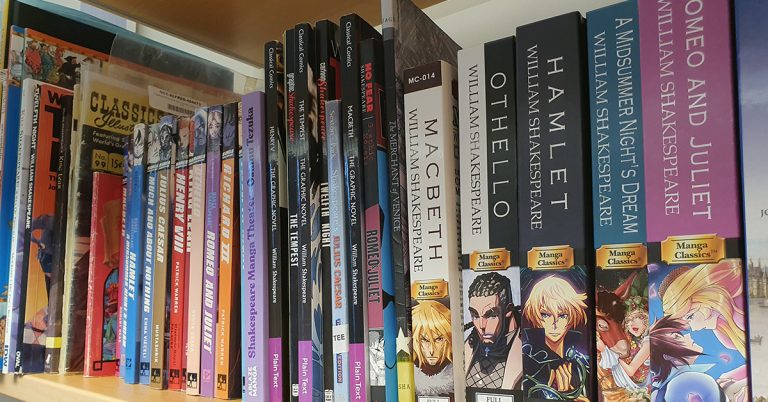
By Erik Eklund
C. S. Lewis is best known for his introductory exposition of Christianity, Mere Christianity (1952), as well as his series of children’s books, The Chronicles of Narnia (1950–56), yet, notwithstanding his numerous theological works, his identity as a theologian is contested. Of course, there is no sense in arguing that a writer of fictional tales for children is incapable of writing good theology, let alone being a theologian; though it is true that Lewis does not write theology in the style in which we have come to expect it to be written, either in Mere Christianity or throughout The Space Trilogy (1938–45), which is far less read and which at times, as in Ransom’s vision of the Great Dance, betrays the presence of a profound metaphysics which cannot be separated from the poetry of its prose. Against his cultured despisers, Lewis does at times attain to that degree of art which we expect from the likes of Nabokov, in which the most faithful description is ingemination.
It must be admitted, however, that throughout Mere Christianity Lewis undoubtedly paints in broad strokes. Indeed, the qualifying “mere” which he appends to Christianity invites the riposte that such talk uncritically presupposes that, beyond St Paul’s declaration to know “nothing among you except Jesus Christ, and him crucified” (1 Cor 2.2), there can be no talk of Christianity which does not attend to the myriad differences which distinguish one tradition from another, that there is no mere Christianity. Too much time has passed. The heretic’s pyre cannot be unlit. The schismatic scars remain.
Nevertheless, Lewis purports to deliver some kind of authoritative vision of Christianity, even as a layperson. Very much like Chesterton’s Orthodoxy (1908) and The Everlasting Man (1925) in this regard, many have found Lewis’ vision of a Christianity seemingly stripped to its core compelling and convincing. This is not to say, however, that Lewis does not draw lines in the sand, though neither should Lewis be understood as being altogether forthcoming in drawing these lines. For while Lewis seeks simply to serve as a butler, ushering in a legion of guests into the mansion of Christianity which contains, so we are told, rooms of our own, Lewis cannot but paint a covertly stylised picture of Christianity which he finds appealing.
No vision from nowhere, Mere Christianity is an exposition of a rather peculiar image of Christianity, the one which Lewis found most appealing—and the genius of his account of this version of Christianity, if it may be reasonably called that, is his wonderful ability of transposing rather complicated concepts into digestible expressions of straightforward prose. This allows Lewis to conceal in the pages of Mere Christianity the greatest subtext throughout his work and the norm which frames his picture of Christianity: the medieval “system.” A scholar of medieval and renaissance literature, Lewis explored the medieval system at length in a series of lectures at Cambridge which were eventually published as The Discarded Image (1964). While this system does not appear on a single page throughout Mere Christianity, an entry in an index will not name it, nevertheless it is everywhere throughout; and the makeshift manifesto which is The Discarded Image, in which Lewis explores and recommends the philosophical, theological and poetic realms of the medieval era, unveils the theological riches which lie concealed behind the “mere” Christianity of his non-fiction and fiction alike.
In my article (Confessing our Secrets: Liturgical Theōsis in the Thought of C.S. Lewis), I apply these insights to crucial scenes in The Great Divorce (1945) and Perelandra (1943) so as to consider the influence of Dante as well as of Pseudo-Dionysius the Areopagite, in particular, upon Lewis’ doctrine of theōsis or post-mortem participation in God. As I write in my article, “to attend to Lewis’ fiction thus requires attending to his intimate familiarity with medieval thought precisely because this familiarity is hermeneutically illuminative of his fiction.” In this light, I argue that Lewis’ unique reception of and improvisation upon Dante and especially of Ps-Dionysius help us to make sense of Lewis’ subtle suggestion in The Great Divorce that we, as unique and unrepeatable images of God, not only contribute to the Beatific Vision, but that there is a sense in which our “contributions” are necessary to fulness of that vision.
Hindsight affords me the opportunity to confess my wish of having made one claim stronger, namely, that it is not only to the medieval system as a whole that we must look if we are to understand Lewis’ theology, but to Ps-Dionysius’ Celestial Hierarchy most especially. For while we may discern in Augustine, Boethius and Dante the foundations of several aspects of Lewis’ theology, it is Ps-Dionysius in particular who gifts to Lewis the participatory metaphysics of the mirror which I believe is the chief symbol of Lewis’ theology and which is figured most beautifully in Ransom’s cosmic vision. For Lewis’ is a participatory metaphysics of the mirror, though his is no mere mirror—but a mirror, as it were, fugue’d. For as one reads The Four Loves (1960), The Discarded Image, Mere Christianity, The Problem of Pain (1940), and The Space Trilogy, one invariably comes across the poetic heart of Lewis’ theological vision. It is the noble winged Seraphim, the highest of the angelic hierarchies, singing sweetly to one another their contrapuntal song: as the highest hierarchy communicate to the lower ranks their unique vision of the God whose dazzling radiance they in flame and in love encircle, whose dazzling darkness they pass on to the faint fires further down the line.
Erik Eklund is a PhD student in Theology and Literature at the University of Nottingham. His research focuses upon theological aesthetics and subtexts in the creative prose writings of Vladimir Nabokov, particularly upon the problem of repetition and its relation to metafiction and metaphysics in Pale Fire (1962). In 2019, the International Vladimir Nabokov Society, with generous support from the Vladimir Nabokov Literary Foundation, awarded Eklund the Dieter E. Zimmer Prize for Best Postgraduate Work on Nabokov for his theological reading of Lolita (forthcoming in Nabokov Studies). Eklund also teaches undergraduate courses in biblical studies, theology and English at Northwest University. He has published articles and essays in Journal of Inklings Studies, Church Life Journal, Transpositions, Nabokov Studies (forthcoming) and Nabokov Online Journal (forthcoming).
The Journal of Inklings Studies is dedicated to the work and legacies of the Oxford Inklings, the literary circle centred on C.S. Lewis, J.R.R. Tolkien, Charles Williams and Owen Barfield. Established in 2005, the journal has been publishing some of the best scholarship in the field, as well as unpublished texts by its subject authors. Find out how to subscribe, or recommend to your library.






